January
10, 1976 on CBS
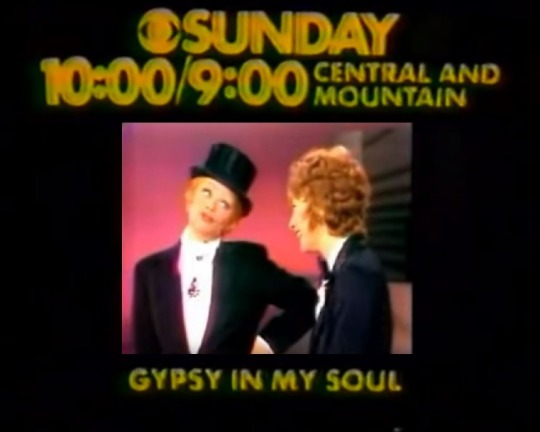
Directed
and Choreographed by Tony Charmoli
Produced
by William O. Harbach, Fred Ebb, Cy Coleman
Written
by Fred Ebb
Music
by Cy Coleman
Shirley MacLaine
was born Shirley MacLean Beaty in Richmond, Virginia, in 1934. Her
younger brother is the actor Warren Beatty. Shirley was stand-by for
Carol Haney in Broadway’s The
Pajama Game
when she was spotted by a Hollywood producer who signed her to a
contract at Paramount. Her first film was Alfred Hitchcock’s The
Trouble With Harry (1950).
In 1960, she finally got to do a screen musical with Can-Can,
ironically, she was supposed to do the Broadway stage version before
being wooed away by Hollywood. Equally at home in drama, comedy, or
musical, MacLaine was nominated for five Oscars before winning in
1983 for Terms
of Endearment.
She won an Emmy Award in 1976 for this special.

Lucille
Ball
was born on August 6, 1911 in Jamestown, New York. She began her
screen career in 1933 and was known in Hollywood as ‘Queen of the
B’s’ due to her many appearances in ‘B’ movies. With Richard
Denning, she starred in a radio program titled “My Favorite
Husband” which eventually led to the creation of “I Love Lucy,”
a television situation comedy in which she co-starred with her
real-life husband, Latin bandleader Desi Arnaz. The program was
phenomenally successful, allowing the couple to purchase what was
once RKO Studios, re-naming it Desilu. When the show ended in 1960
(in an hour-long format known as “The Lucy-Desi Comedy Hour”) so
did Lucy and Desi’s marriage. In 1962, hoping to keep Desilu
financially solvent, Lucy returned to the sitcom format with “The
Lucy Show,” which lasted six seasons. She followed that with a
similar sitcom “Here’s Lucy” co-starring with her real-life
children, Lucie and Desi Jr., as well as Gale Gordon, who had joined
the cast of “The Lucy Show” during season two. Before her death
in 1989, Lucy made one more attempt at a sitcom with “Life With
Lucy,” also with Gordon, which was not a success and was canceled
after just 13 episodes.
The
Gypsies:
Trudy
Carson made her Broadway debut as a gypsy in 1964 with (ironically) a show
titled I Had a Ball. Five more shows followed, including the
original Follies ,
and Irene in 1973. She was also a Rockette. On TV she was one of the June
Taylor Dancers and danced on film in All
That Jazz (1979). She was married to comic Soupy Sales.
Denise
Pence
also danced in the original Follies
(1972) as well as working with Bob Fosse in Pippin.
Pence was married to fellow gypsy Steven
Boockvor
and the two served as Michael Bennett’s models for the characters of
Christine and Al in the long-running musical A
Chorus Line,
a tribute to gypsy dancers. She danced on film in Jesus
Christ Superstar
(1973) also with Boockvor. She left dancing for daytime drama and was
Emmy nominated for “The
Guiding Light.” He was
nominated for Broadway’s 1978 Tony Award as Featured Actor in the
musical Working.
In addition, he was also seen in or choreographed 15 other Broadway
musicals, including A
Chorus Line and
Follies.
Jonathan
Wynne was
also in the film version of Superstar,
as well as in Finian’s
Ranbow
on screen. On Broadway, he was in the ensemble of the 1975 revival
of
Hello, Dolly starring
Pearl Bailey.
Gary
Flannery
was one of Shirley’s gypsies on Broadway in 1976 as well as her
return engagement in 1984. He was also a replacement in the Broadway
show Dancin’.
He was a principal dancer in the film All
That Jazz.
Jane
Summerhays started
dancing on Broadway in the original
A Chorus Line and
was nominated for a Tony Award for her role as Lady Jacqueline in
1986’s Me
and My Girl.
She was able to move into comedy acting and has been seen in a
variety of roles on Broadway, including plays by Alan Ayckbourn and
Ken Ludwig.
Wyetta
Turner
was also on screen in Superstar,
but was seen on Broadway in the original company of Hello,
Dolly
and the revival of The
Pajama Game.
Adam
Grammis first
danced on Broadway in 1971 in Wild
and Wonderful,
which closed on opening night. He was a replacement in the original
A
Chorus Line and
also was one of Shirley’s gypsies in her 1976 Broadway outing. He
died in 1985, an early victim of the AIDS pandemic.
The
child dancer and three senior citizen dancers are uncredited.
GYPSY Backstory
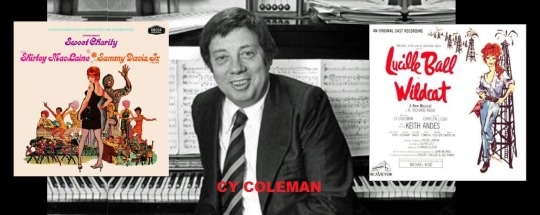
Cy
Coleman wrote the lyrics for Lucille Ball’s Broadway musical,
Wildcat
(1960).
He also wrote the music for Sweet
Charity,
which was filmed starring Shirley MacLaine in the title role.
MacLaine’s theme song is “If They Could See Me Now” from Sweet
Charity
while Lucy’s theme song (outside of the “I Love Lucy Theme”) is
Coleman’s “Hey, Look Me Over” from Wildcat.
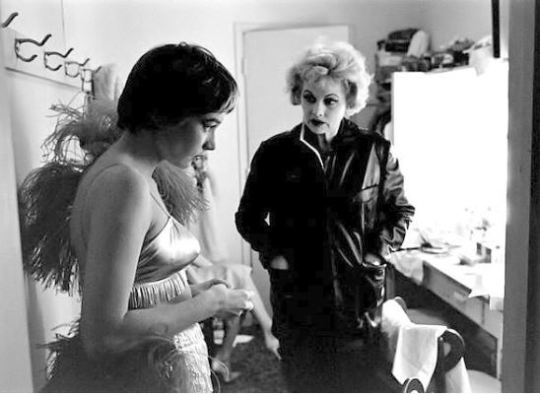
On
November 1, 1959, Lucille Ball and Shirley did a Las Vegas benefit
for the victims of Japan’s Typhoon Vera. The show, however, was not
televised. Lucy’s frequent co-star Bob Hope was also part of the
benefit. There were nearly 3,200 victims of the Typhoon.

On
April 19, 1976, Shirley MacLaine appeared at the Palace Theatre on
Broadway in a similar show written by Fred Abb and Cy Coleman and
directed by Tony Charmoli. This incarnation was simply titled
Shirley
MacLaine or
Shirley
MacLaine and Shirley’s Gypsies,
who were Candy Brown, Gary Flannery, Adam Grammis, Joann Lehman, and
Larry Vickers. An original cast album from the show was titled
Shirley
MacLaine Live at the Palace.
The song “The Gypsy in My Soul” was included on all three. This
was her first time back on the Broadway stage since The
Pajama Game
more than twenty years earlier. The show was also a big hit in
London. Needless to say, Lucille Ball was not involved with any of
these other versions of the show.
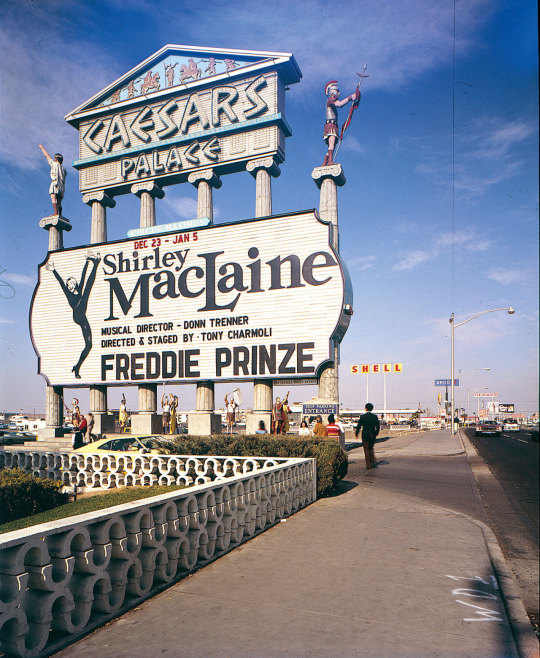
The
day before the show opened in New York City, the New York Times
published this feature article and interview, conducted while the
show was in Las Vegas and filmed for broadcast.
LAS
VEGAS – On a sign outside
Caesar’s Palace in Las Vegas a larger‐than‐life Shirley MacLaine
is shown tossing off a preternaturally high kick. Words don’t matter
in this town. Signs do. There is a neon hieroglyph for almost
everything, and this sign means Shirley MacLaine is back on stage and
kicking up her heels. Her show, “A Gypsy In My Soul,” which
sports Miss MacLaine and a back‐up troupe of five dancers (aka
Shirley’s Gypsies) opened to raves at London’s Palladium. The British
critics hailed her as a performer on a par with Judy Garland, Danny
Kaye and Ethel Merman to more raves in 12 cities throughout Europe
and Latin America, and is now en route to New York City, where it
opens tomorrow night at the Palace Theater.On
a recent afternoon, Miss MacLaine sat cross‐legged at the living
room coffee table or her borrowed Las Vegas house, eating breakfast
and talking about the origins of her show. “After
working in the McGovern campaign,” she recalled. “I took a trip
across America by car. I’d seen a lot of other countries, but that
was the first time I’d really seen America. What I saw was a lot of
disillusionment, mistrust and despair. I got back to Los Angeles,
looked at myself in the mirror and saw the same thing. I’d gained 30
pounds, lot my hair go, and looked awful.” Her post‐election
depression deepened. Then, she said, “I decided to do something
about it. The first thing did was to go China. The second thing was
to put together show.
In
2015, an online source talked to MacLaine about working with Lucille
Ball:
“Talk
about a woman with balls! She loved her legs and she said, ‘I want
to come on your show and I want to do something in a leotard!’ I
thought, ‘That’s good,’ because I like my legs too. I thought
it was so wonderfully honest of her to put it in her contract like
that. She was a stickler for being liked. Once you made an
arrangement with her it didn’t shift. Always told you the truth.”

The
show was taped over two days. The first day with an audience for
Shirley’s solos and numbers with the gypsies, and without an audience
for Lucy’s portions of the show. Ball loved live audiences when
doing comedy, but after breaking her leg she was scared to death to
dance live in front of an audience.
In
his book I
Loved Lucy,
author Lee Tannen remembers attending the taping of “Gypsy in My
Soul”.

The
program’s main sponsor was Bell Telephone.

Filmed rehearsal
sequences the begin the special were done by The Maysles Brothers,
who also created the documentary Gray
Gardens
in 1975.

Lucille Ball had finished doing “Here’s Lucy” in 1974. This special was aired between two of her own specials: “Three For Two” (December 3, 1975) and “What Now Catherine Curtis?” (March 30, 1976).
Some
sources list the air date of the special as January 20, 1976, and one
or two list it as January 21st.

The
word ‘gypsy’ in the title refers to Broadway dancers who generally
went from one show to the next, much like the Romany gypsies of
central Europe, who were traditionally transient people. The most
famous use of the word ‘gypsy’ in show business was by stripper Rose
Lee Hovic (above), who took the stage name Gypsy Rose Lee. Her autobiography
was turned into the stage and screen musical Gypsy.
Recently, negative connotations of the word ‘gypsy’ have caused it to
become more selectively used in the entertainment industry.
GYPSY IN MY SOUL

The
show opens on location in an actual rehearsal room where Shirley,
Lucy, and ‘the gypsies’ are rehearsing. During a five minute break,
Shirley introduces the show talking directly to the camera. After a brief title sequence, the action
returns to the rehearsal room where Lucy drags Shirley onto the floor
by her hair (literally).

As Shirley makes her entrance into the song,
the rehearsal morphs into the actual show, on a soundstage with
orchestra, lighting, and costumes. With the singers and dancers, she
performs the title song “Gypsy
in My Soul.”
Next
Shirley performs
“It’s Not Where You Start (It’s Where You Finish)”
from the Cy Coleman Broadway musical Seesaw
(1973) with lyrics by Dorothy Fields. During the number, each of the
gypsies take their turn in the spotlight (literally).
Shirley
and gypsies Steve and Adam dance “The Rudolf Friml Hustle,” a
mash-up of the popular dance the Hustle and the 1937 song “The
Donkey Serenade”
from the 1912 operetta The
Firefly,
filmed in 1937. They get a standing ovation from the studio
audience.
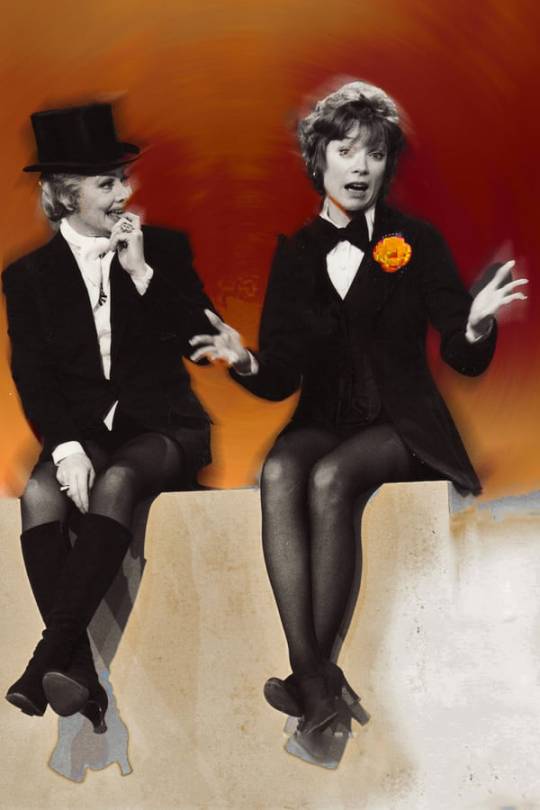
After
a commercial break, Shirley and the gypsies sing “Lulu’s Back in
Town” (appropriately adapted to “Lucy’s
Back in Town”)
which heralds the entrance of Lucille Ball. The song was originally
written by Harry Warren and Al Dubin in 1935. In a planned comedy
bit, Lucy acts surprised to see Shirley in line with the gypsies.
Lucy
tells the now familiar story of how she survived as a chorine by
visiting coffee shops, waiting until a patron left, then slipping
into their seat to use their tip to order coffee. If they left a
half-eaten doughnut it was a bonus.
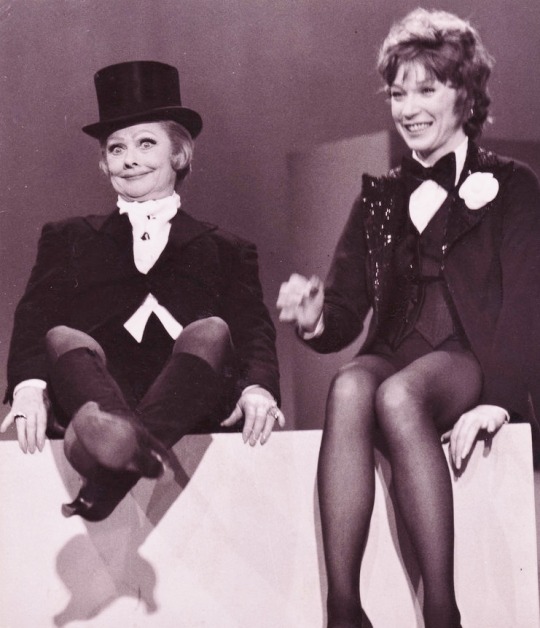
Shirley:
“How
many chorus jobs were you fired from?”
Lucy:
“Every
one of them!”
Lucy
and Shirley sing Cy Coleman’s “Bouncing
Back for More,” a
song with lyrics by Carolyn Leigh written for Lucy to sing in 1960’s
Wildcat,
but never used. It was later inserted into the 1976 musical
Hellzapoppin
but
show closed out of town in Baltimore.
Shirley
and the gypsies do a fast-paced dance to “Bring
Back Those Good Old Days”
but Lucy says that Shirley is a star, and shouldn’t be working so
hard. Lucy demonstrates the same routine doing the minimum: a few
shoulder shrugs and hip gyrations. Shirley begs her to put a bit
more into it. With Shirley leading, the two do a slightly more
physical routine, ending with high kicks, which the audience
naturally greets with applause.
The
second half hour of the show starts with MacLaine and the gypsies
performing “Every
Little Movement (Has a Meaning All Its Own)”
written by Otto Harbach and Ken Hoschna for the 1910 operetta Madame
Sherry.
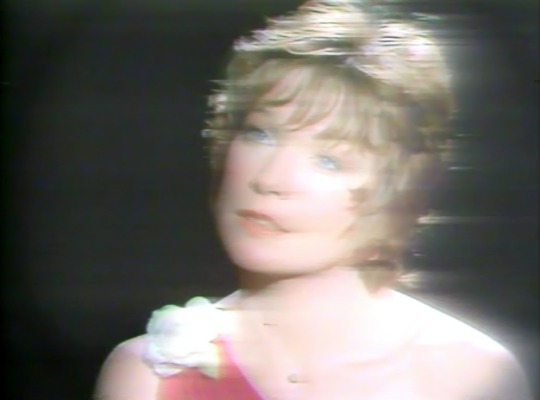
Alone
in a spotlight, Shirley dedicates the torch song “She’s
a Star” to
all those who didn’t make it in show business. This is a translation of the 1973 song
“La
Chanteuse a Vingt Ans” Serge
Lama.
The English version was arranged by Cy Coleman.

As
a testament to the history of the gypsy dancer, Shirley brings on a
little girl doing a tap routine while also hitting a hotel bell with
her foot!

On the other end of the spectrum, next onstage is a trio
of senior citizens who each take their turn doing a specialty dance.
Shirley then reveals that everyone in the studio audience is a
dancer. Their admission ticket was their AFTRA (American Federation
of Radio and Television Artists) card! Shirley choreographs the
entire audience from their seats, row by row, and then finally doing
all three steps together to the music of “Shall We Dance” from
The
King and I.

Shirley
brings the entire audience on stage, and thanks them for all they’ve
sacrificed to make performers like her look good. She then drags
(literally) Lucy on stage and they all end with high kicks to “It’s
Not Where You Start (It’s Where You Finish.”
On
This Date in Lucy History
~ January 10th

“California,
Here We Come!” (ILL S4;E13) ~ January 10, 1954

“Lucy
and Art Linkletter”
(TLS S4;E16) ~ January 10, 1966

“Lucy
and the Chinese Curse”
(HL S4;E18) ~ January 10, 1972
Leave a comment